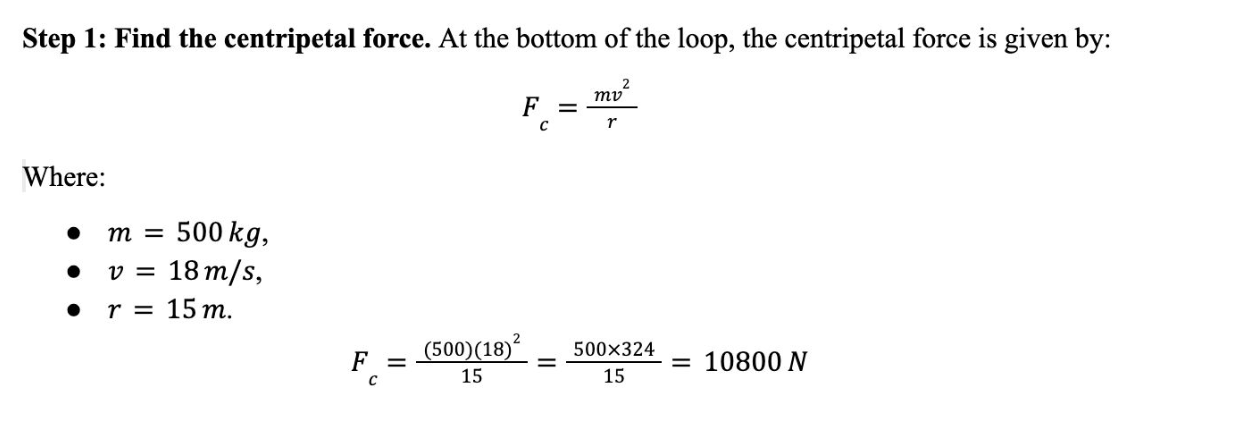Uniform Circular Motion
1/12
There's no tags or description
Looks like no tags are added yet.
Name | Mastery | Learn | Test | Matching | Spaced |
|---|
No study sessions yet.
13 Terms
Roller Coaster at the Top of the LoopProblem:
A roller coaster car with a mass of 600 kg moves in a vertical loop with a radius of 20 m. At the top of the loop, the car's speed is 12 m/s. Calculate the normal force acting on the car at the top of the loop. Assume the acceleration due to gravity is 9.8 m/s2.
List the 3 Steps.
Step 1: Find the centripetal force
Step 2: Determine the gravitational force.
Step 3: Apply the forces at the top of the loop.
Roller Coaster at the Top of the Loop Problem: '
A roller coaster car with a mass of 600 kg moves in a vertical loop with a radius of 20 m. At the top of the loop, the car's speed is 12 m/s. Calculate the normal force acting on the car at the top of the loop. Assume the acceleration due to gravity is 9.8 m/s2. What is the Second Step?

Roller Coaster at the Top of the Loop Problem:
A roller coaster car with a mass of 600 kg moves in a vertical loop with a radius of 20 m. At the top of the loop, the car's speed is 12 m/s. Calculate the normal force acting on the car at the top of the loop. Assume the acceleration due to gravity is 9.8 m/s2. What is the third step?
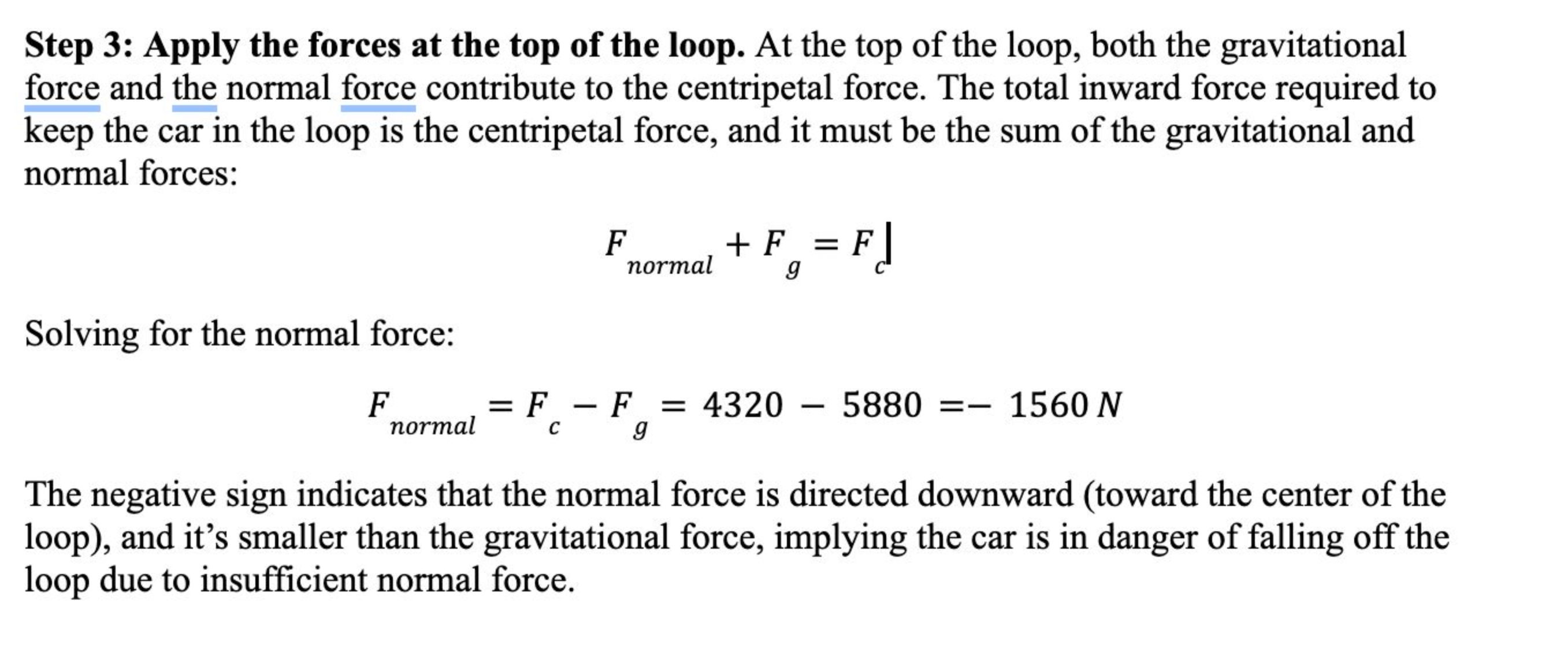
Roller Coaster at the Top of the Loop Problem:
What curriculum competency relates to the Roller Coaster at the Top of the Loop Problem:
Understanding centripetal force and how it interacts with gravitational force at the top of a loop.
1. Demonstrate an understanding of scientific concepts and theories related to circular motion.
2. Apply scientific reasoning to make predictions and solve problems.
Speed at the Bottom of the LoopProblem:
A 500 kg object attached to a cable moves in a vertical circular path with a radius of 15 m. If the object's speed at the bottom of the loop is 18 m/s, calculate the tension in the cable at the bottom of the loop. Assume the acceleration due to gravity is 9.8 m/s2. What are the three steps?
Step 1: Find the centripetal force.
Step 2: Find the gravitational force
Step 3: Apply the forces at the bottom of the loop
Speed at the Bottom of the Loop Problem:
A 500 kg object attached to a cable moves in a vertical circular path with a radius of 15 m. If the object's speed at the bottom of the loop is 18 m/s, calculate the tension in the cable at the bottom of the loop. Assume the acceleration due to gravity is 9.8 m/s2. What is the first Step?
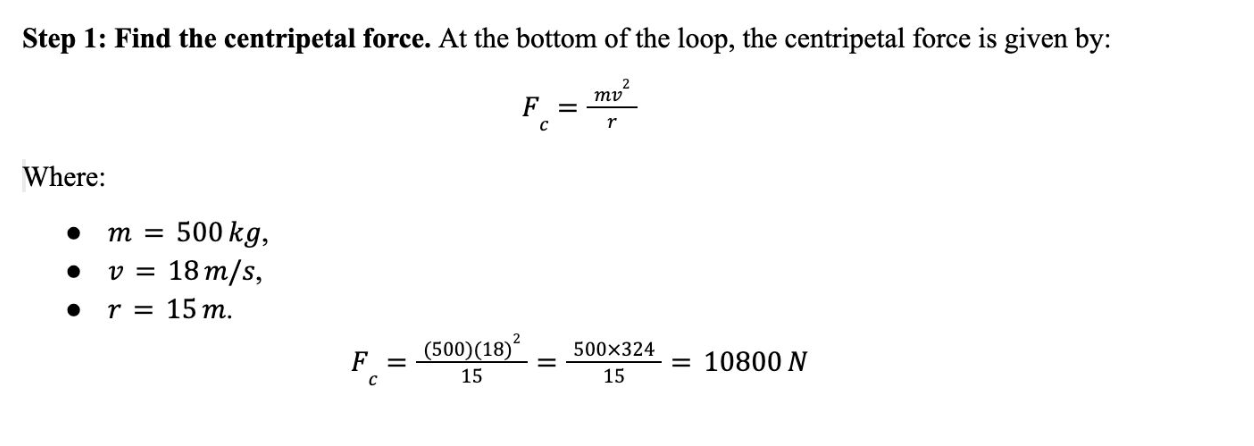
Speed at the Bottom of the Loop Problem:
A 500 kg object attached to a cable moves in a vertical circular path with a radius of 15 m. If the object's speed at the bottom of the loop is 18 m/s, calculate the tension in the cable at the bottom of the loop. Assume the acceleration due to gravity is 9.8 m/s2. What is the second step?

Speed at the Bottom of the Loop Problem:
A 500 kg object attached to a cable moves in a vertical circular path with a radius of 15 m. If the object's speed at the bottom of the loop is 18 m/s, calculate the tension in the cable at the bottom of the loop. Assume the acceleration due to gravity is 9.8 m/s2.
What is the third step?

What are the curriculum competencies that relate to:
Speed at the Bottom of the Loop
Problem: A 500 kg object attached to a cable moves in a vertical circular path with a radius of 15 m. If the object's speed at the bottom of the loop is 18 m/s, calculate the tension in the cable at the bottom of the loop. Assume the acceleration due to gravity is 9.8 m/s2.
Competency 1: Demonstrate an understanding of scientific concepts and theories related to circular motion.
Competency 2: Plan and conduct investigations to gather evidence of scientific phenomena.
Competency 3: Apply scientific reasoning to make predictions and solve problems.
Friction Problem
A car is navigating a turn with a coefficient of friction of 0.8.
The radius of the turn is 50 meters, and the car's speed is 20 m/s. The mass of the vehicle is 1000 kg.
Can the car safely navigate the turn?
what is the first step?
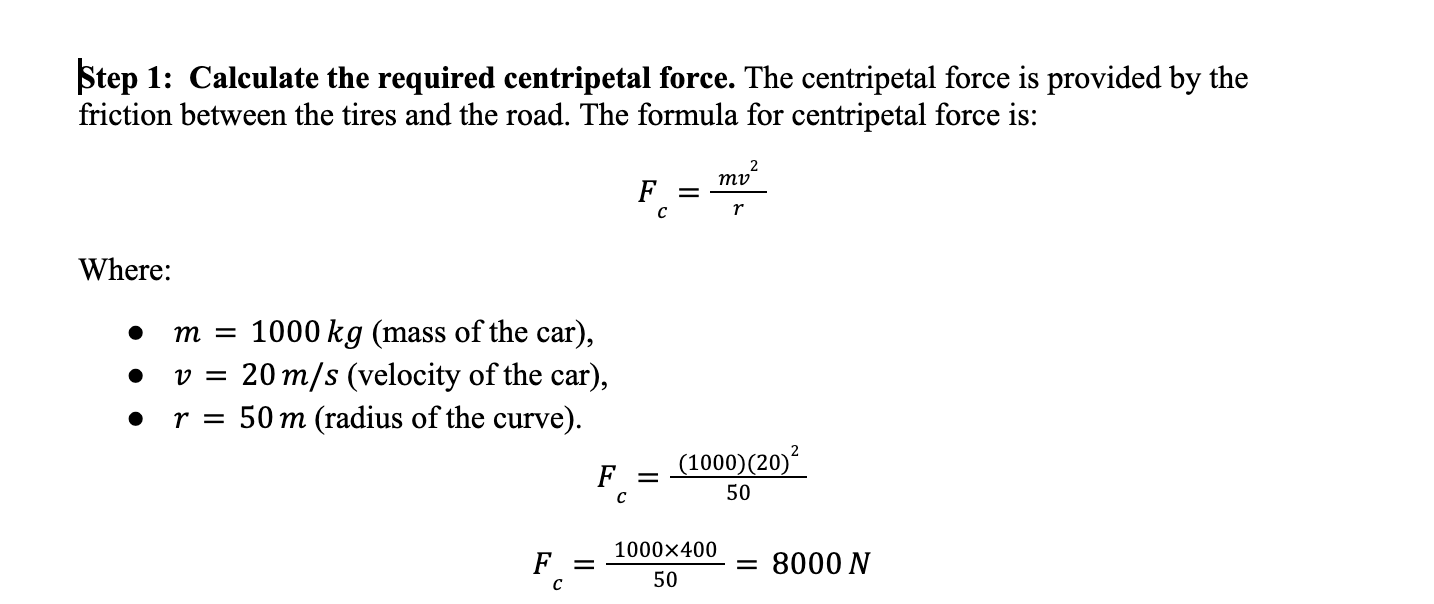
A car is navigating a turn with a coefficient of friction of 0.8.
The radius of the turn is 50 meters, and the car's speed is 20 m/s. The mass of the vehicle is 1000 kg.
Can the car safely navigate the turn?
what is the second step?

A car is navigating a turn with a coefficient of friction of 0.8.
The radius of the turn is 50 meters, and the car's speed is 20 m/s. The mass of the vehicle is 1000 kg.
Can the car safely navigate the turn?
what is the third step?
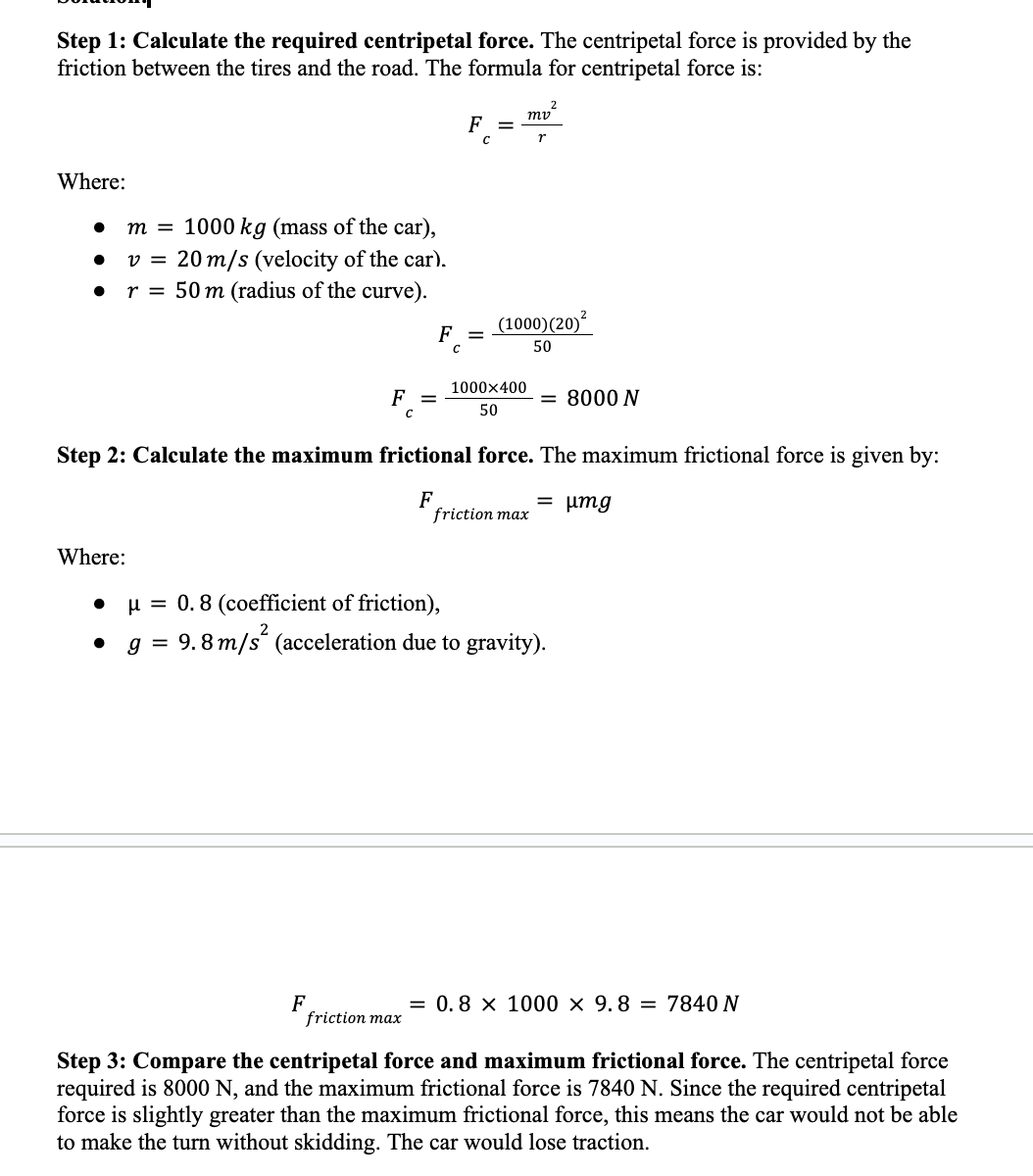
Roller Coaster at the Top of the Loop Problem: '
A roller coaster car with a mass of 600 kg moves in a vertical loop with a radius of 20 m. At the top of the loop, the car's speed is 12 m/s. Calculate the normal force acting on the car at the top of the loop. Assume the acceleration due to gravity is 9.8 m/s2. What is the first Step?
